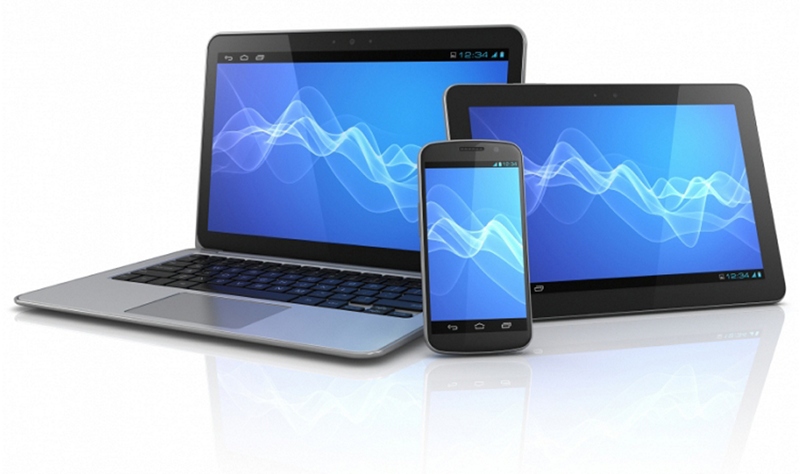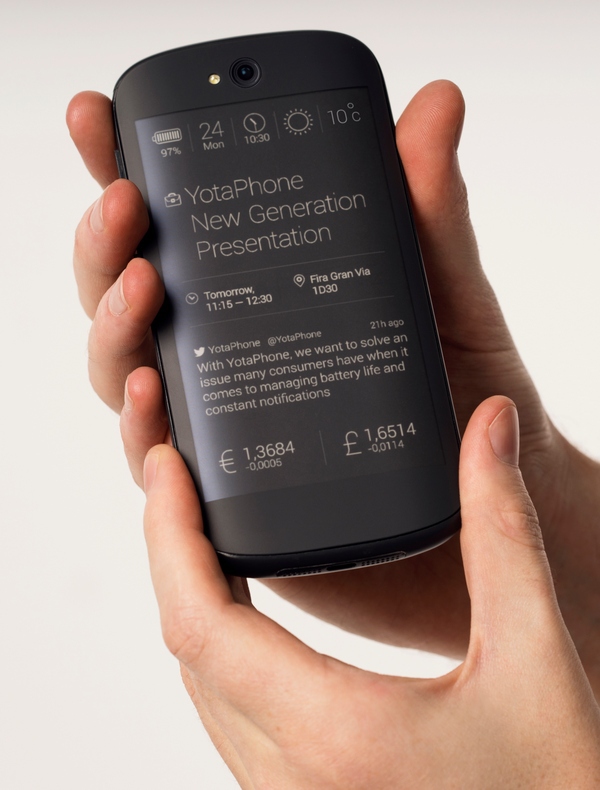How mobile technologies have changed our lives

Speaking of mobile technology, we usually mean all sorts of gadgets, applications, processors, batteries, displays. This is all interesting and exciting, but let's think about such an important aspect as the type and degree of influence of mobile technologies on our daily life.
A few decades ago, at the beginning of its formation, mobile technologies were not yet very mobile. Proud and very wealthy owners needed a good physical shape in order to comfortably handle heavy and bulky gadgets. In addition, it was necessary to have access to an electrical outlet in order to use the first mobile devices, since the batteries were not built into them yet.
Since then, technology has progressed incredibly far, with a particularly large qualitative growth in the past ten years. Mobile devices have become smaller, more powerful and much more useful. They have penetrated into all areas of our life, and their role continues to grow. The availability of all kinds of smartphones, tablets, e-readers, now still smart watches and, in the near future, smart glasses, contributes to their rapid spread throughout the world. And, of course, all these billions of mobile devices have a major impact on our quality of life.
')
But let's digress from how thinner, lighter and more adaptive the hardware can be. In the end, where more important is not “faster-higher-stronger”, but what do we, as users, gain from using all this diversity?
Communication and society
Yes, all kinds of gadgets can make our life easier and more fun. And the simplification of establishing and maintaining social ties plays a significant role in this. Today, with the right person, you can get in touch equally easily and quickly whether he is in a neighboring house or in nature thousands of kilometers away from you. You can send large amounts of information anywhere in the world within a few seconds, which is especially important for various responsible business tasks. You can work on one project together with people on the other side of the planet. You can get confirmation or approval on urgent, vital issues. In other words, mobile technologies have seriously expanded our business opportunities.
Almost instant communication means allows us to feel much closer to family and friends. We can talk to them at any time, exchange news, ask for advice or help. And to communicate visually, using video chat. We can keep in touch with our children, even if we cannot be close to them. It is much more important than it seems at first glance.
Thanks to the development of mobile technologies, such a rapid growth of social networks that is observed today has become possible. Without mobile Internet, smartphones and tablets, we would be completely dependent on stationary computers, as well as on stationary phones. In today's world, it is even difficult to imagine ...
Information and consumer opportunities

With the help of mobile technology, we can now pay for parking directly from the phone. Built-in maps allow you to not get lost in any area of an unfamiliar city. We are available to the schedule of transport by pressing only one button. In the end, now we can simply find out and explore the interesting places from which we were close.
Now we have in our pockets and bags more all sorts of information about the world than ever in history. In fact, for hundreds of millions of people it has become completely natural and habitual to immediately search in smartphones and tablets for information about any activity. Our gadgets can already anticipate what information we may be interested in, and give it to us in a convenient form.
The seemingly superficial and frivolous daily use of mobile technology has changed the human community. It made our connections with other people much wider and closer. In the network, we find true friends who we have never met in real life. We can learn and discuss any current issues and events around the world. This stimulates the emergence of communities and the exchange of views that were previously simply impossible.
On the other hand, the opportunity for everyone to express their opinions led to the flourishing of the phenomenon of network trolling. Unfortunately, many are beginning to get too involved in the participation in the Internet squabble, unconsciously spilling out the accumulated irritation and displeasure. Also, many users practice trolling as a way to have fun. In addition to the obvious destructive influence on conversations and discussions, trolling leads to the emergence of many useless comments and quarrels, provokes interlocutors to "get personal."
The medicine
 In addition to changes in our social activity and the expansion of available information, mobile technologies may soon begin to actively influence our health. Now technologies are being actively developed and tested, which, in theory, will allow us to receive medical advice using smartphones and tablets, including on the basis of statistics on our daily physical activity and well-being. Add to this the "telemedicine" access to the results of analyzes of remote patients and the ability to measure certain physiological parameters using sensors embedded in mobile devices. In this way, it will be possible in the near future to establish primary diagnoses and provide medical advice in case of emergency. And some of these scenarios are already being implemented in a number of countries in the world, in remote and underdeveloped areas.
In addition to changes in our social activity and the expansion of available information, mobile technologies may soon begin to actively influence our health. Now technologies are being actively developed and tested, which, in theory, will allow us to receive medical advice using smartphones and tablets, including on the basis of statistics on our daily physical activity and well-being. Add to this the "telemedicine" access to the results of analyzes of remote patients and the ability to measure certain physiological parameters using sensors embedded in mobile devices. In this way, it will be possible in the near future to establish primary diagnoses and provide medical advice in case of emergency. And some of these scenarios are already being implemented in a number of countries in the world, in remote and underdeveloped areas.Another of the many medical uses of mobile technology is to help people with low or no mobility, as well as those with autism. With the help of mobile gadgets, millions of such people acquire the opportunity to contact with the world. For example, patients after strokes and traumatic brain injuries are now very successfully using tablets to restore their former abilities. Deaf people can now chat with other people thanks to SMS. Diabetics were able to control their glucose levels and send data wirelessly to compact insulin pumps . Thanks to smartphones, the blind have become less dependent on sighted people, because now there is software that helps them navigate the cities, find the right clothes for the current weather, scan the issued change and report the amount.
Conclusion
All this is only a small part of how mobile technologies have transformed, improved and simplified the lives of billions of people. And this process goes on as the technologies themselves develop. We are, without exaggeration, lucky to live in a mobile era. These technologies have become irreplaceable helpers for some 15 years. Who among you periodically did not feel like without a phone without hands? The role of gadgets has become very large in the set of our large and large businesses, the daily routine and unique events.
But new opportunities brought with them new difficulties. Each technology has its own advantages and disadvantages, which you have to either put up with or look for ways to solve them.
A few years ago, the boom of smartphones began, which quickly began to force out keyboard mobile phones. There was an evolutionary change of species. Unusual devices looked absolutely incredible, the lack of buttons was so unusual. But the big screens (compared to ordinary phones), which took on almost all the functions of device control, turned out to be very “voracious”. The increase in the information display area attracted the rapid development of all kinds of software, which, in turn, spurred the use of more powerful processors and graphics chipsets. As a result of the growth of energy consumption, the duration of the work of modern gadgets rarely reaches two days, provided sufficiently active use. Of course, rechargeable compact energy sources have also gone a long way in recent years. But to keep up with the increased appetites of modern gadgets, batteries are not yet possible. So in YotaPhone another unique innovation was embodied, the second display on electronic ink.
At the time, the advent of smartphones radically changed the way people think about the possibilities a mobile phone can have, for which tasks it can be used. The very approach to the use of “mobile phone” has undergone radical changes due to the introduction of the technology of a fully touch screen that supports multiple simultaneous touches. With the introduction of the second screen, built on a completely different technology, our understanding of the scenarios for using a mobile phone (now a smartphone) has changed again.

In addition to the obvious advantages, such as increased battery life and the possibility of comfortable reading texts in bright light, the rear screen finally turned the smartphone into a category of “constantly on” devices. Of course, technically all smartphones work all the time, but to take advantage of them, you need to do a few actions: pick up, press the power button, unlock the screen, press the desired icon or notification. Only after all this we get the information we need or access to some capabilities of the device. But the electronic ink of the second screen of the YotaPhone consumes almost no energy, and therefore it is best suited for constantly displaying all kinds of sensitive information: notifications, messages, current time, etc. Moreover, the user chooses what information he wants to immediately see on the second screen. Often you do not even need to take the smartphone in hand, you just have to look at it.
Source: https://habr.com/ru/post/362557/
All Articles